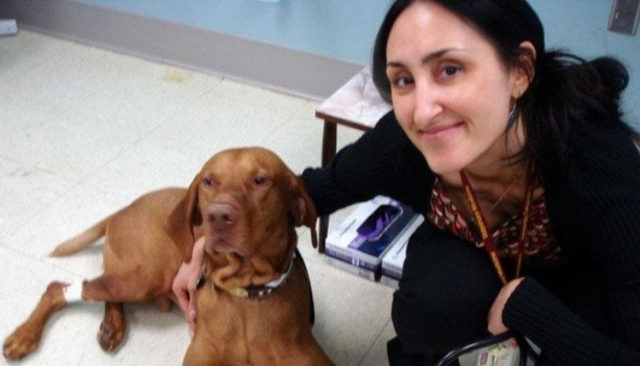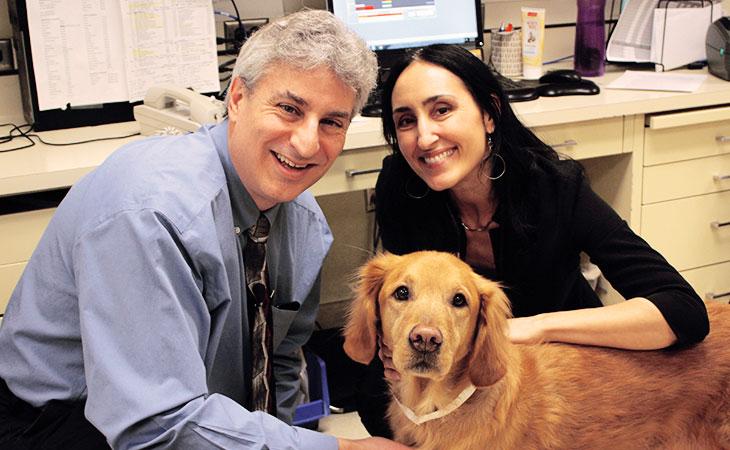
Dogs diagnosed with a type of cancer called hemangiosarcoma showed improved survival rates when treated with a new drug.
This is one of the largest accomplishments in 30 years, according to study authors, who may have finally found a way to treat one of the most common type of cancer in dogs.
After years of trial and error, scientists are hopeful that this new drug means that we will finally be able to live without the fear of cancer in dogs, or ourselves.
What is HSA?
Canine HSA is a cancer which is very common, aggressive, and incurable in dogs. It is a type of sarcoma (cancerous, malignant tumors of the connective tissue). It is very similar to angiosarcoma, which afflicts humans as well.
Both of these canine cancers tend to spread before diagnosis occurs, therefore rendering the survival rate of affected dogs to be exceptionally short – even with treatment.
Less than 50 percent of dogs survive for 4-6 months, and a mere 10 percent survive for more than one year after being diagnosed.
The HSA study
The University of Minnesota conducted this breakthrough trial and tested a new drug (developed at UMN) with dogs. The results were a marked improvement in the survival rates of dogs with a type of cancer called hemangiosarcoma (or HSA).
The results have been published in the Molecular Cancer Therapeutics journal.
The UMN study’s co-author, Jaime Modiano, VMD, PhD, a professor at the University Of Minnesota College Of Veterinary medicine, stated that this may be the most significant advancement in the treatment of canine cancer HSA in the last 30 years.
Dogs in the study were treated with the new drug called eBAT, which was developed by study senior and author Daniel Vallera, PhD. Vallera is also a professor at the University of Minnesota Medical School.
Dr. Vallera said that eBAT was created specifically for targeting tumors in dogs while simultaneously causing minimal damage to their immune system.

Success of eBAT drug
HSA, a vascular cancer, forms in the blood vessels. eBAT was specifically chosen for the study due to its ability to not only target tumors, but to target the body’s vascular system as well.
Even better is that eBAT afforded patients much more physical comfort than current treatments. Traditional cancer treatments options have side effects which leave dogs feeling very uncomfortable. Patients were caused no appreciable harm as a side effect.
Basically, dogs being treated with this drug were not only afforded longer survival rates, but they were also given an improved quality of life. 2 wins with just one drug.
In the study, eBAT was tested on 23 dogs. They were of various breeds and sizes, and all were affected with HSA of the spleen.
The dogs received three treatments of eBAT after having surgery to remove the tumor, and before beginning conventional chemotherapy.
Dogs being treated with this drug saw an increase in 6-month survival rates of approximately 70 percent. 5 dogs out of the 23 dogs treated lived well over a year – more than 450 days.
Not Just a Win for Canines
Because this drug was so successful in treating a type of dog cancer which is remarkably similar to the human version angiosarcoma, paired with the fact that many other types of tumors are able to be targeted by eBAT, means that this drug is likely to be tested in clinical trials for human cancer patients as well.
According to Modiano, the goal of this type of work is to create a world in which people (and dogs) no longer have to live in fear of cancer.
Thanks to his work and the work of many others, it looks like we may soon get there.
Reference:
- Antonella Borgatti, Joseph S. Koopmeiners, Aaron L. Sarver, Amber L. Winter, Kathleen Stuebner, Deborah Todhunter, Anthony E. Rizzardi, Jonathan C. Henricksen, Stephen Schmechel, Colleen L. Forster, Jong-Hyuk Kim, Jerry Froelich, Jillian Walz, Michael S. Henson, Matthew Breen, Kerstin Lindblad-Toh, Felix Oh, Kristy Pilbeam, Jaime F. Modiano, Daniel A. Vallera. Safe and Effective Sarcoma Therapy through Bispecific Targeting of EGFR and uPAR. Molecular Cancer Therapeutics, 2017; molcanther.0637.2016 DOI: 10.1158/1535-7163.MCT-16-0637












